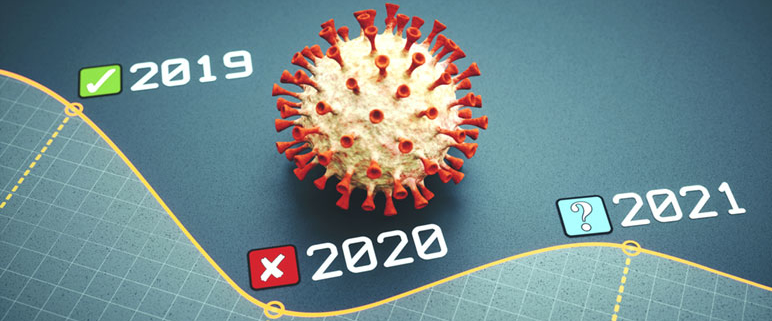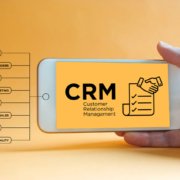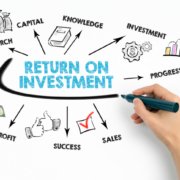Senior Living Marketing During a Pandemic: 5 Things We Learned
On the night of March 11, 2020, three things happened: The President of the United States addressed the nation about COVID-19. The NBA announced it had suspended its season. And Tom Hanks tweeted that he and his wife (the actor Rita Wilson) had contracted the coronavirus and were being treated in Australia.
That night, a Wednesday, turned out to be a watershed moment. Even though the virus had already reached our shores and begun taking lives, the declarations on the evening of March 11, 2020, made the pandemic real in a way it hadn’t been before.
A recap of what happened next is unnecessary. Anyone reading this has already lived it. Still, we’d be remiss if we didn’t acknowledge this pivotal one-year anniversary.
In marketing, we constantly review our marketing efforts, like campaigns, conversions, and customer lifecycles. So it makes sense for us to stop and reflect on senior living marketing during a pandemic—what we learned, what surprised us, and what we can do better the next time disaster strikes. (Although we’re hoping none of us sees anything like this again in our lifetimes!)
1. Senior living sales teams found ways to engage and continue selling.
This didn’t necessarily surprise us, but it did surprise many of our clients, at least in the beginning. At first, sales teams panicked. “How are we going to sell during lockdowns if we can’t give people tours?”
As the saying goes, necessity is the mother of invention. Creating virtual sales experiences became second nature to sales reps . . .
- They gave live virtual tours to prospects via smartphones or tablets, walking prospects through the lobby, the dining room, the gym, the residences, etc.
- They held one-to-one video conferences. Sales staff realized they could still have “sit-down” meetings with prospects, thanks to platforms like Zoom and Skype.
- They uploaded paperwork to tablets so that people could virtually sign on the dotted line from the comfort and safety of their cars.
In addition, they focused on doing more of the simple things—thing that are often easy to overlook during “normal” times. For example, they made more house calls (masked, of course) and dropped in to check on prospects and/or to share info about helpful things, like a list of curbside pickups for groceries or pharmacies (this was in the early days). They cleaned up their senior living CRMs. They worked more closely with their marketing counterparts in developing virtual senior living marketing events.
2. Having a quality website that was easy to update became incredibly important.
Too many senior living communities treat their websites as static digital brochures. Often, these sorts of websites are built on platforms that don’t make updating them easy.
That can (and did) create a huge problem for some communities when it came time to update their home page with info about COVID-19. Accurate information—and easy access to it—was incredibly important in those early days when there was so much confusion, chaos, and fear.
Your senior living website is the most important marketing and sales asset that you have. It’s your hub. And yes, it is in an investment to do it right, but one that pays off.
Communities that had good websites were able to make updates quickly, create new pages, and provide critical info to residents’ families and friends as well as prospects. Communities that didn’t have a solid website suffered—and looked woefully unprepared and out-of-date.
3. How, when, and where you communicated your messages mattered.
Yes, your website serves as your communication hub. But keep in mind the many spokes connected to that hub:
- Emails
- Social media
- Pay-per-click ads/remarketing ads
- On-hold messaging
- After-hours messaging
- Text messaging
- Chat bots
- Live chat
- On-site info for residents
- Snail mail communications with residents/families
Having info on your home page about COVID was essential—but it wasn’t enough. The messaging had to be communicated consistently over a variety of media. Why? Simple. Because you never knew where, when, or how someone was going to access it.
One thing we discovered is that in times of a crisis like COVID-19, people crave immediate, current, and LIVE communications. One of our clients held Facebook LIVE events in the early days with the company CEO along with other folks from the organization who had relevant, helpful info.
These regular briefings reassured families that their loved ones were safe. Plus, one of the many benefits of FB Live is that these videos are then available for people to watch “on demand.”
4. Even when you turn a corner, you still face more unknowns.
We think this feeling/trend is going to continue for a while. Yes, we’re all grateful that several vaccines are now available and older adults and other vulnerable populations have been among the first to receive the vaccines. That’s good news for the senior living industry, but that doesn’t mean things will be returning to normal any time soon.
Sales reps will still need to think creatively and continue embracing “virtual selling” through the end of this year—at least. Marketing teams will need to stay on top of messaging across all media and be willing to adjust messages (often quite quickly) as things change.
The best thing communities can do is show that they’re current about what they communicate, how often they communicate, and what channels they use to communicate critical messages.
5. Our team made us incredibly proud.
At Senior Living SMART, our team was incredibly fortunate. We’re a virtual agency to begin with. Our team members already work from home—and know how to do so, even with kids and animals underfoot.
Of course, once home-schooling began, that did make things more challenging for some of our team members. Not to mention, everyone had concerns about the virus and any family and friends who contracted it. But we can honestly say our team didn’t miss a beat. Our wonderful team members worked hard to help clients and to make sure everything continued running as smoothly for them as possible.












